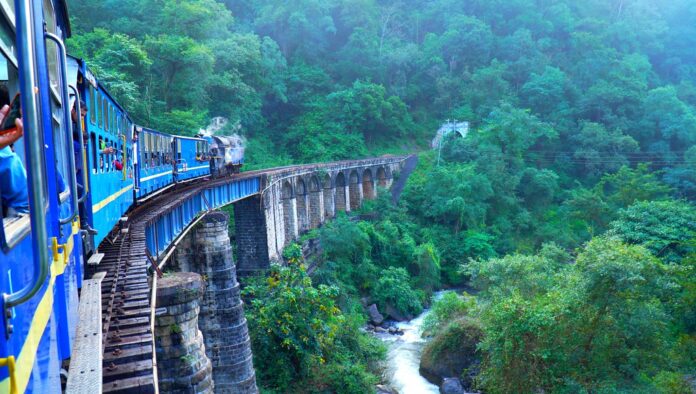Introduction: A Journey of Steel and Heritage
The Nilgiri Mountain Railway (NMR), a UNESCO World Heritage Site, is a remarkable testament to early steel engineering in India. Traversing the steep slopes of the Nilgiri hills in Tamil Nadu, the railway relies on steel viaducts and bridges that connect remote towns, combining functionality with historical engineering excellence. Beyond its operational purpose, NMR exemplifies the innovative use of steel during the colonial era and remains a celebrated engineering heritage.
The Story Behind the Nilgiri Mountain Railway
The NMR project was conceived in the late 19th century to connect the hill station of Ooty with the plains of Tamil Nadu, improving accessibility for commerce and tourism. Construction began in 1891, and the railway was operational by 1908. Facing steep gradients and difficult terrain, engineers relied heavily on steel trestles, viaducts, and bridges, allowing the railway to climb steep slopes safely. The project showcases a blend of mechanical ingenuity and steel construction techniques that were ahead of their time.
Design and Structural Marvel
The railway features multiple steel viaducts spanning deep gorges and valleys, designed to bear the weight of locomotives and rolling stock while withstanding natural forces like wind and monsoon rains. The viaducts use truss and lattice steel frameworks, ensuring durability and stability across uneven terrain. These structures illustrate the early mastery of steel as a material capable of combining strength with minimal visual intrusion in challenging landscapes.
Innovative Construction Techniques
Given the remote and hilly terrain, prefabricated steel sections were transported from ports to construction sites and assembled on location using scaffolding and manual hoists. The alignment relied on rack-and-pinion technology for steep sections, integrating steel frameworks with railway mechanics. This combination of structural and mechanical engineering made NMR one of the most technically advanced hill railways of its era.
Did You Know? – Nilgiri Mountain Railway Facts
- Steel Engineering Pioneer: Multiple viaducts and bridges were among the first large-scale steel structures in Indian hill stations.
- Steep Gradients: The railway climbs over 2,000 meters using a combination of adhesion and rack systems.
- UNESCO Heritage: Recognised for its historical and engineering significance.
- Longevity: Over a century of continuous operation with ongoing maintenance and reinforcement.
- Integration with Landscape: Steel viaducts designed to blend with hilly terrain while ensuring structural safety.
Legacy and Future Implications
The NMR viaducts and bridges remain living examples of early steel construction, influencing later industrial and transportation projects in India. Lessons from these historic structures—such as steel truss design, modular assembly, and adaptability to terrain—inform modern infrastructure projects, including long-span bridges and hill railways.
A Beacon of Engineering Heritage
Nilgiri Mountain Railway illustrates how early steel innovation enabled infrastructure in challenging environments. Its durable viaducts and bridges continue to inspire engineers and urban planners, showing that thoughtful steel engineering can combine functionality, resilience, and aesthetics.
Call to Action
For engineering enthusiasts and history buffs, visiting the Nilgiri Mountain Railway provides a firsthand experience of India’s heritage steel engineering marvels. Observing these viaducts offers valuable insights into early industrial design, bridging the gap between historical ingenuity and modern construction practices. Stay tuned for more stories exploring India’s iconic steel structures and the engineering lessons they continue to inspire.




